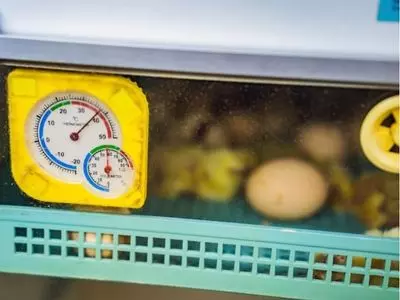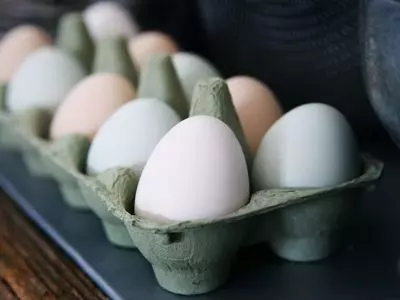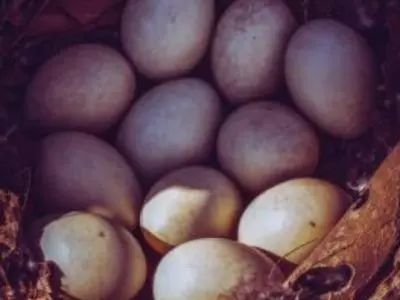No products in the cart.
Turkey
How to Incubate Turkey Eggs – 4 METHODS
If you’re looking to incubate turkey eggs, you’ve come to the right place! In this blog post, we will discuss how to incubate turkey eggs with and without an incubator and provide tips on ensuring your hatchlings are healthy and thrive. Let’s get started!
*This post may have affiliate links, which means I may receive commissions if you choose to purchase through links I provide (at no extra cost to you). As an Amazon Associate I earn from qualifying purchases. Please read my disclaimer for additional details.
How to Incubate Turkey Eggs
Incubating turkey eggs is a fun and rewarding experience, but it does require some patience and knowledge. Here are some of the essential steps for incubating turkey eggs:- Collect the eggs. It’s best to collect them from a local farm or hatchery, as they will be fresher and have a higher success rate.
- Set up your incubator. You will need to fill it with an appropriate amount of vermiculite or perlite and then add water until the material is damp but not wet.
- Set the incubator’s temperature to between 99-102 degrees Fahrenheit. Then, you will need to turn on the incubator and allow it to warm up for 24 hours before adding the eggs.
- Place the eggs in the incubator, being careful not to damage them.
- Turn the eggs 3-5 times daily. The best way to do this is by using an egg turner.
- After 7 days, you should begin candling the eggs. Candling is a process of shining a light through the egg to check on the embryo’s development inside.
- At this point, you may also need to increase the humidity levels in the incubator by lightly spraying the eggs with water once or twice daily.
- Finally, after 28 days, it will be time to hatch your turkey eggs! Allow the chicks to dry off and fluff their feathers before moving them into a brooder.
How to Set Up an Incubator

Temperature
The incubator should be set to 99°F.Humidity
The humidifier should be set to 55% or 84.5°F if you use a wet bulb thermometer. Day 7-18: 50-60% or 81-85°F if using a wet bulb thermometer. Day 19-21: 60-65% or 85-88°F if using a wet bulb thermometer. Day 22-24: 70-80% or 88-90°F if using a wet bulb thermometer.Egg Turning
Eggs should be turned 4 times daily until lockdown. After day 18, eggs should only be turned 2 times per day. Do not turn eggs during the last 3 days of incubation.Candling Eggs
Candling is the process of shining a light through an egg to check its development. This should be done on day 7 to check for fertility and growth. If an embryo is present, you will see veins and a dark spot. If a source is not current, the egg will be clear. Remove any non-fertile eggs from the incubator as soon as possible to prevent bacteria growth.Lockdown Date
Lockdown should occur on day 24 when all poults have hatched and are dry. Remove any unhatched eggs from the incubator at this time, as well.Lockdown Temperature
The temperature should be 99°F. Humidity should also be increased to 65% or 88°F if you use a wet bulb thermometer. Do not open the incubator during a lockdown unless necessary. It’s essential to maintain these guidelines throughout the entire incubation process to ensure healthy turkey poults. By providing a safe and controlled environment, you will give your poults the best chance for survival and success. Read our related article where we review the Best Cabinet Incubators for quail, chickens, turkeys, and ducks!Ways to Incubate Turkey Eggs

Using an Incubator
A commercial incubator can be used to maintain optimal temperature and humidity levels for turkey eggs.Under a Broody Hen
If you have a broody hen, she can be placed in a nesting box with the turkey eggs. The hen will help keep the eggs warm and protected.In a Homemade Incubator
You can construct a homemade incubator using a cooler or Styrofoam box. Make sure to maintain proper temperature and humidity levels inside the incubator. Read our related article where we show you how to make a Homemade Duck Egg Incubator (it’s the same process for turkey eggs!)Under a Heat Lamp
Another option is to place the turkey eggs under a heat lamp set to low heat (around 100 degrees Fahrenheit). Again, this method is not as reliable as using an actual incubator.What to Do if a Turkey Egg Doesn’t Hatch
If one of your turkey eggs does not hatch, there are a few things you can do:- Wait a few days to see if the egg will hatch. Sometimes it takes longer for an egg to hatch.
- Check the egg for signs of life. If you see veins and a dark spot (indicating an embryo), the egg is probably still alive.
- Check the incubator temperature and humidity levels to ensure they are correct.
After the Eggs Hatch

- Remove any unhatched eggs from the incubator.
- Put the turkeylings in a brooder or other equivalent area.
- Ensure that the baby turkeys have food and water available to them.
- Keep the temperature between 95 and 100 degrees F for the first week, then lower it by 5 degrees per week until feathered.
How to Tell if a Turkeyling is Healthy
It’s possible to hatch a turkey chick that might not be healthy so it’s important to know the signs of a bird that isn’t well. Here are a few things to look for when checking if your turkeylings are healthy:- They should have dry, fluffy feathers.
- They should be active and alert.
- Their eyes should be clear and open.
- There should be no discharge from their nostrils or mouths.
- They should be eating and drinking like normal.

